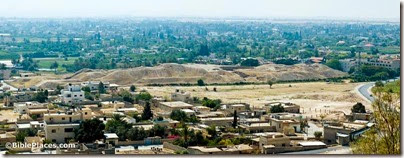How do recent archaeological discoveries relate to the Bible? Michael Grisanti addresses this issue in a detailed article published last year in the Journal of the Evangelical Theological Society and now available online. He begins with a statement from a critical scholar and then explains his own approach.
The archaeological evidence cited below and in any similar study never provides certifiable proof that a given individual lived or that a certain event took place. Our confidence in the accuracy and historicity of the people and events referred to in God’s Word draws on other evidence, primarily theological statements the Bible makes about itself. Regardless, one should recognize that the archaeological evidence does not rule out the people or events described in the Bible. As a matter of fact, archaeology provides a “picture” that points to the feasibility or plausibility that the people and events described in the Bible lived and occurred just as they are described.
[…]
Out of all the areas that could have received attention, I have narrowed my focus on two chronological periods: the Conquest of Canaan and the United Monarchy. For both I summarize the consensus of critical scholars and then consider the evidence that has been found. With regard to the Conquest of Canaan, the paper considers the recent discussion of an Egyptian pedestal with three name rings on it as well as the destruction of Jericho and the location and destruction of Ai. After surveying the heated debated concerning the United Monarchy with a focus on David and Solomon, the paper considers key archaeological discoveries found at Jerusalem, Khirbet Qeiyafa and the copper mines in southern Jordan. With each example I argue that the discoveries made at least allow for the historicity and accuracy of the biblical narratives describing those people and events.
Read it all here.
Photo from Samaria and the Center
